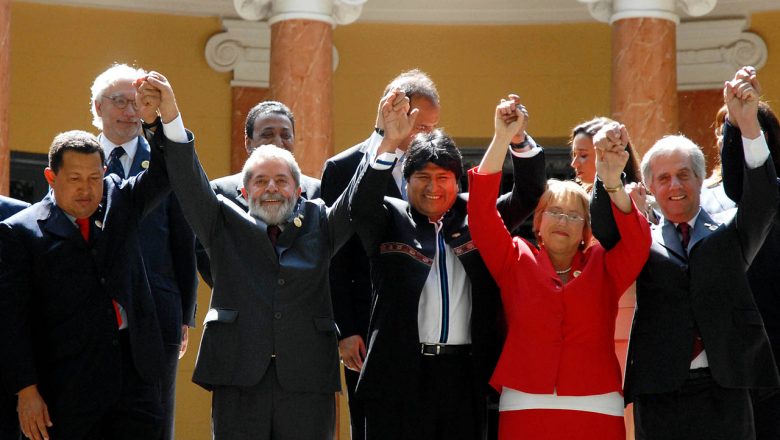By the end of the 1990s, South America was desperate for change. A debt crisis drove most countries in the region to elect neoliberal governments before subsequent periods of hyperinflation and banking crises caused unemployment and poverty to rise. A groundswell of dissatisfaction was latched onto by galvanized social movements, clearing the decks for what we know today as the Pink Tide.
The Pink Tide was a historical moment, beginning in 1999, in which throughout South America, left-wing and center-left governments came into power. It was so named as even though the leaders in question were to the left of center, many were not so radical, nor traditionally socialist, hence the use of the color pink.
The Pink Tide was hardly a homogeneous or unified movement, either. In fact, what made the phenomenon so striking was the wide range of leftist ideologies on show. A reformist-turned-Marxist populist became president in Venezuela.
Brazil elected a trade unionist, Bolivia, an indigenous activist. The period also saw a Peronist take charge in Argentina, a Keynesian economist in Ecuador, a once guerrilla Marxist in Uruguay, and a Christian socialist in Paraguay.
Far from being a revolutionary band of hard-left radicals, South America’s Pink Tide governments were largely reformist, intending to domesticate capitalism rather than destroy it. A common theme among these administrations was the implementation of vast social programs aimed at improving people’s everyday lives in areas such as health, education, and housing.
These gains were palpable among the lower-middle and working classes, which made the Pink Tide governments initially very popular. After nearly a full generation of austerity and/or uncertainty, the masses could be forgiven for believing in the possibility of a new and less unequal South America.
The social gains under the initial Pink Tide were made possible thanks to the commodity boom of the 2000s. Suddenly, South American governments had money to spend and redistribute. However, under the pressure of the global financial crises of 2008 and 2011, Pink Tide leaders began to wobble, before dropping like flies in the current decade.
The swell of the Pink Tide

Year Zero of the Pink Tide is...


 Search
Search






































